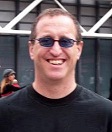 Interpretations continues its twentieth season of provocative programming in New York City. Founded and curated by baritone Thomas Buckner in 1989, Interpretations focuses on the relationship between contemporary composers from both jazz and classical backgrounds and their interpreters, whether the composers themselves or performers who specialize in new music. To celebrate, Jerry Bowles has invited the artists involved in this season’s concerts to blog about their Interpretations experiences. The concert on 12 March 2009 is a recital by the producer himself, baritone Thomas Buckner. He took time out of his busy schedule to tell us in his own words about the series and his concert on it:
Interpretations continues its twentieth season of provocative programming in New York City. Founded and curated by baritone Thomas Buckner in 1989, Interpretations focuses on the relationship between contemporary composers from both jazz and classical backgrounds and their interpreters, whether the composers themselves or performers who specialize in new music. To celebrate, Jerry Bowles has invited the artists involved in this season’s concerts to blog about their Interpretations experiences. The concert on 12 March 2009 is a recital by the producer himself, baritone Thomas Buckner. He took time out of his busy schedule to tell us in his own words about the series and his concert on it:
On Thursday March 12, the Interpretations series continues its twentieth season. As the series founder and artistic director, I am grateful to Sequenza 21 for featuring our series. The series was founded to nurture community of new music composers and their interpreters. Sequenza 21 nurtures our community by allowing us to communicate with one another.
I am often asked what draws me to the music I present and perform. An answer I have often given is that, whereas many people can make music that sounds like music, I am interested on people who make music that sounds like them. It is a criterion well met by the music I have chosen to present in my concert of new music for voice. Each or the composers is a true original.
The first half of the concert will feature an extended work written for me by composer/pianist “Blue” Gene Tyranny, whom I got to know through our work in the operas of Robert Ashley. The piece, “Somewhere Songs”, has an original text by the composer and is for voice and electronically reproduced sounds. The three songs concern friendship in extraordinary circumstances and are “based on true stories about hidden places, depicted physically, psychologically and socially in specific word idioms.” There is a natural musicality and a sense of mystery in these songs. They have been released on a recent CD of “Blue”s music on the mutable music label.
The next piece in the concert, “T-Language”, made by Tom Hamilton and me, is an improvisation for voice and electronics. We have sought to give the work a clear identity by using recorded vocal improvisations to shape the electronic sounds. Tom and I have worked together for years, and this piece has been developing really well. Our previous recordings include Tom’s “Off Hour Wait State” and our collaboratively created “Jump the Circle, Jump the Line.”
The concert ends with “Beats”, composed by Stuart Saunders Smith for me and my long time collaborator, pianist Joseph Kubera. The texts are from Jack Kerouac and Walt Whitman. It is not a song cycle. Rather, the texts are spoken with piano accompaniment, and the voice sings wordlessly. The music is extremely complex rhythmically. A friend of mine characterized one of Stuart’s pieces as sounding like Roscoe Mitchell, Mallachai Favors and Lester Bowie improvising, but exactly notated. This music is challenging and enjoyable to perform and listen to. It also requires us both to play percussion and has a theatrical flair characteristic of Stuart’s music.
Those of you who have seen the publicity for this concert know that I was also to perform a work by Fred Ho for baritone saxophone and baritone voice. Fred has been waging a courageous war against cancer. He is doing very well, but is presently indisposed, so we will perform his work in a future season.
I hope you will join us at this concert and at the remaining concerts in our twentieth season.
Thomas Buckner is in recital at Roulette on Thursday 12 March. For more information:
Interpretations
Roulette
 Interpretations continues its twentieth season of provocative programming in New York City. Founded and curated by baritone Thomas Buckner in 1989, Interpretations focuses on the relationship between contemporary composers from both jazz and classical backgrounds and their interpreters, whether the composers themselves or performers who specialize in new music. To celebrate, Jerry Bowles has invited the artists involved in this season’s concerts to blog about their Interpretations experiences. The concert on 12 February 2009 brings us back to
Interpretations continues its twentieth season of provocative programming in New York City. Founded and curated by baritone Thomas Buckner in 1989, Interpretations focuses on the relationship between contemporary composers from both jazz and classical backgrounds and their interpreters, whether the composers themselves or performers who specialize in new music. To celebrate, Jerry Bowles has invited the artists involved in this season’s concerts to blog about their Interpretations experiences. The concert on 12 February 2009 brings us back to 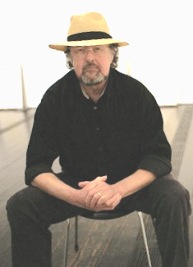 The recent deaths of both George Perle and Lukas Foss are part of the sad but expected passing, of composers who came of age in the 1940s and 50s. But a slight shock went through me with Douglas Britt’s
The recent deaths of both George Perle and Lukas Foss are part of the sad but expected passing, of composers who came of age in the 1940s and 50s. But a slight shock went through me with Douglas Britt’s 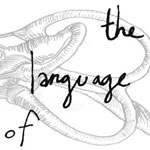
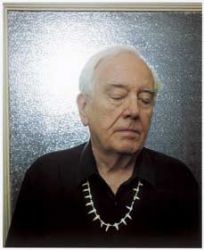 Interpretations continues its twentieth season of provocative programming in New York City. Founded and curated by baritone Thomas Buckner in 1989, Interpretations focuses on the relationship between contemporary composers from both jazz and classical backgrounds and their interpreters, whether the composers themselves or performers who specialize in new music. To celebrate, Jerry Bowles has invited the artists involved in this season’s concerts to blog about their Interpretations experiences. Produced in tandem with La Mama ETC and Performing Artservices, the centerpiece of the series this year is a two-week, three opera, 10 performance, mini-retrospective of the recent works of
Interpretations continues its twentieth season of provocative programming in New York City. Founded and curated by baritone Thomas Buckner in 1989, Interpretations focuses on the relationship between contemporary composers from both jazz and classical backgrounds and their interpreters, whether the composers themselves or performers who specialize in new music. To celebrate, Jerry Bowles has invited the artists involved in this season’s concerts to blog about their Interpretations experiences. Produced in tandem with La Mama ETC and Performing Artservices, the centerpiece of the series this year is a two-week, three opera, 10 performance, mini-retrospective of the recent works of 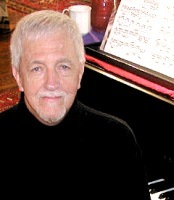 My concert on the Interpretations Series on November 20th will mark the third time that I have presented my compositions on this prestigious series. These concerts have featured my works for flute and piano, vocal pieces for Thomas Buckner and the Yamaha Disklavier™ and keyboard works that combine the unique features of the Yamaha Disklavier™ as a concert piano and as a controller keyboard.
My concert on the Interpretations Series on November 20th will mark the third time that I have presented my compositions on this prestigious series. These concerts have featured my works for flute and piano, vocal pieces for Thomas Buckner and the Yamaha Disklavier™ and keyboard works that combine the unique features of the Yamaha Disklavier™ as a concert piano and as a controller keyboard.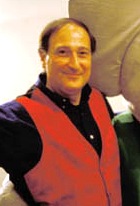 Thirteen Ways of Looking at a Black Bela
Thirteen Ways of Looking at a Black Bela